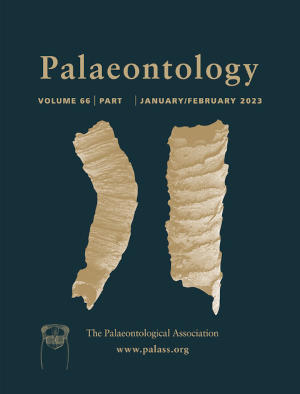Article: Preservational modes of some ichthyosaur soft tissues (Reptilia, Ichthyopterygia) from the Jurassic Posidonia Shale of Germany
Publication: Palaeontology
Volume:
66
Part:
4
Publication Date:
2023
Article number:
e12668
Author(s):
Randolph G. De La Garza, Peter Sjövall, Rolf Hauff, and Johan Lindgren
Abstract
Abstract Konservat-Lagerstätten, such as the Toarcian (Early Jurassic) Posidonia Shale of southwestern Germany, are renowned for their spectacular fossils. Ichthyosaur skeletons recovered from this formation are frequently associated with soft tissues; however, the preserved material ranges from three-dimensional, predominantly phosphatized structures to dark films of mainly organic matter. We examined soft-tissue residues obtained from two ichthyosaur specimens using an integrated ultrastructural and geochemical approach. Our analyses revealed that the superficially-looking ‘films’ in fact comprise sections of densely aggregated melanosome (pigment) organelles sandwiched between phosphatized layers containing fibrous microstructures. We interpret this distinct layering as representing condensed and incompletely degraded integument from both sides of the animal. When compared against previously documented ichthyosaur fossils, it becomes readily apparent that a range of preservational modes exists between presumed ‘phosphatic’ and ‘carbonized’ soft-tissue remains. Some specimens show high structural fidelity (e.g. distinct integumentary layering), while others, including the fossils examined in this study, retain few original anatomical details. This diversity of soft-tissue preservational modes among Posidonia Shale ichthyosaurs offers a unique opportunity to examine different biostratinomic, taphonomic and diagenetic variables that potentially could affect the process of fossilization. It is likely that soft-tissue preservation in the Posidonia Shale was regulated by a multitude of factors, including decay efficiency and speed of phosphatic mineral nucleation; these in turn were governed by a seafloor with sustained microbial mat activity fuelled by high organic matter input and seasonally fluctuating oxygen levels.
